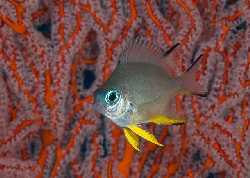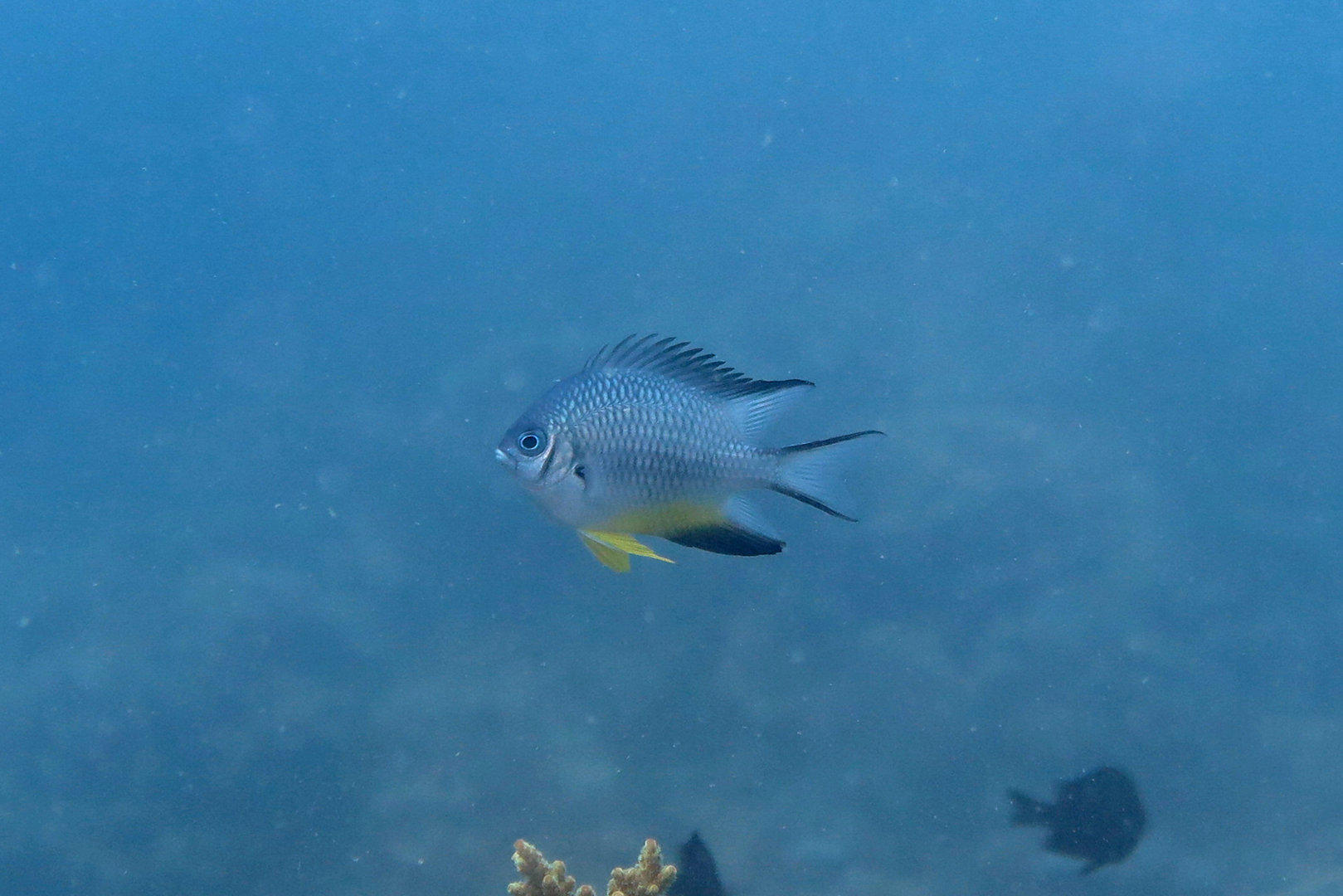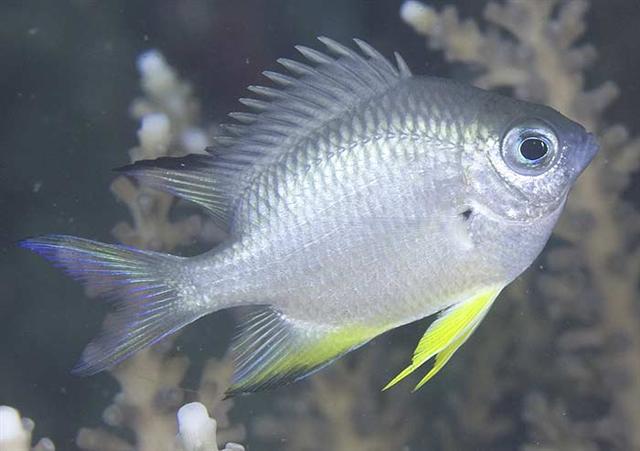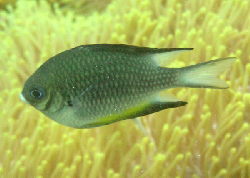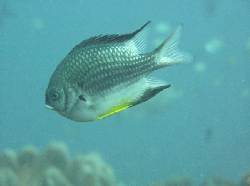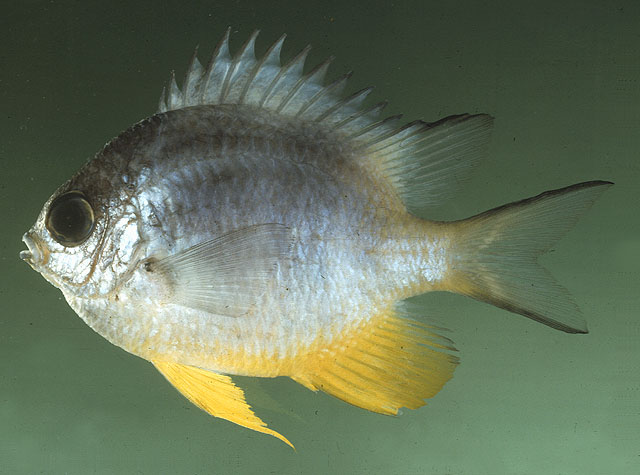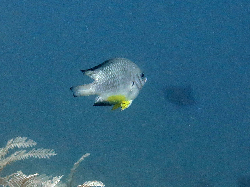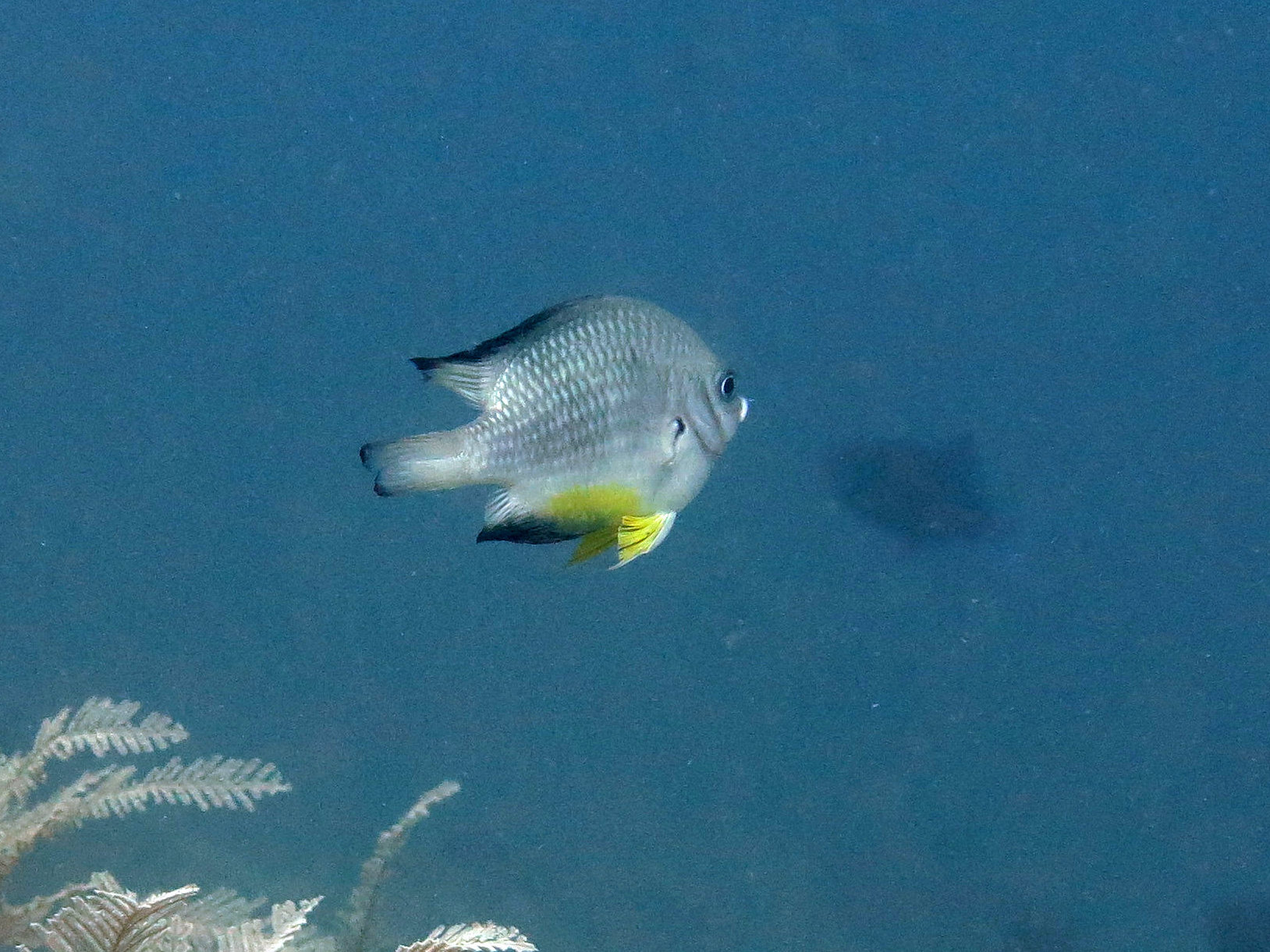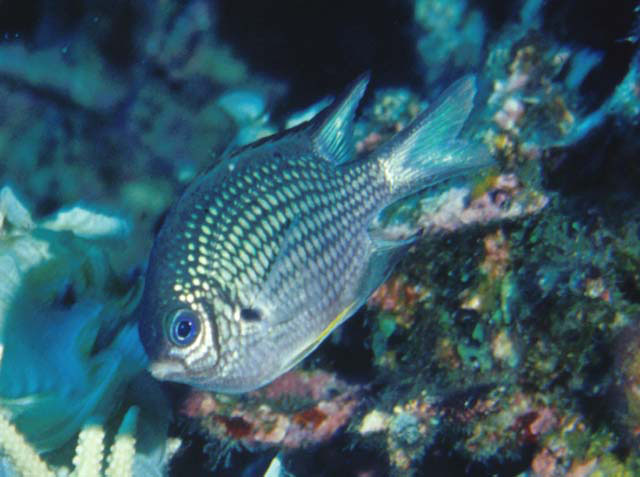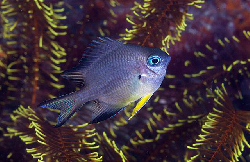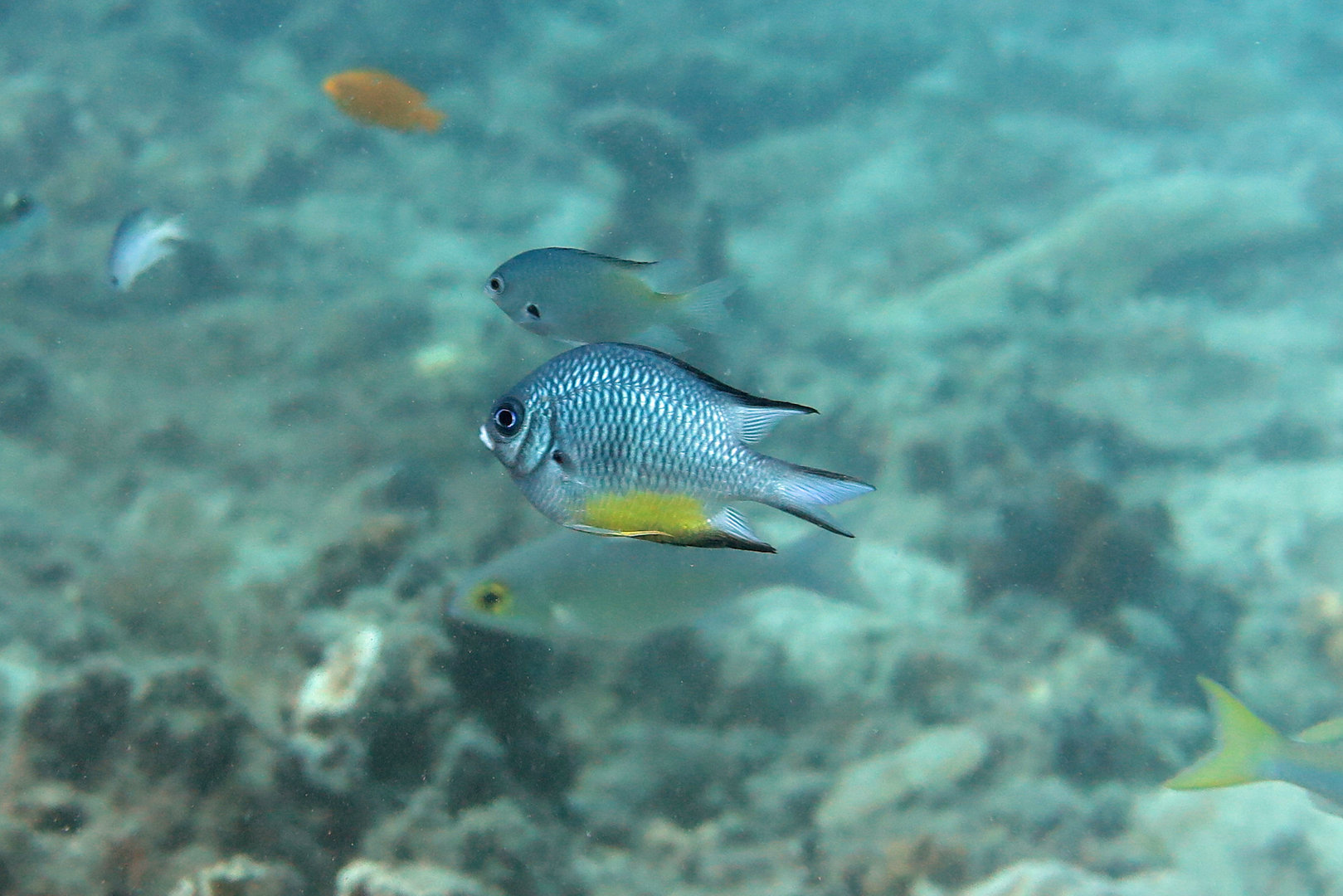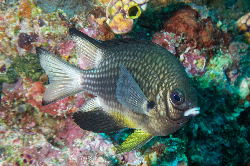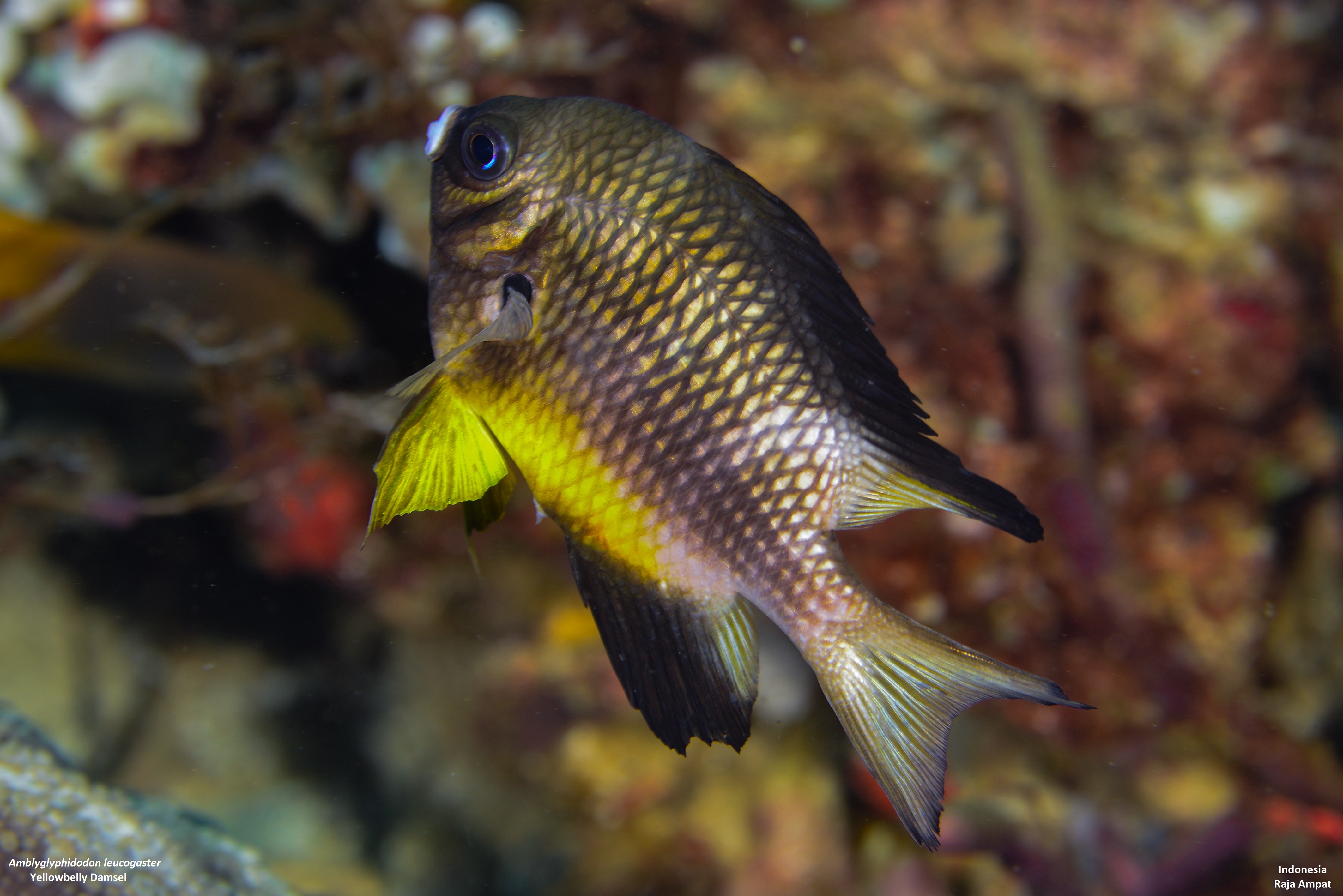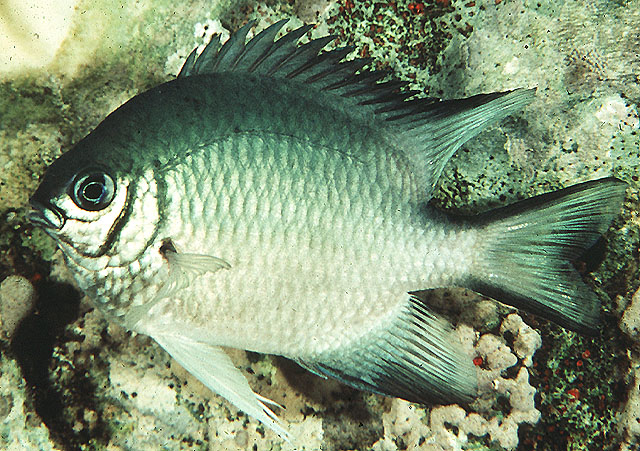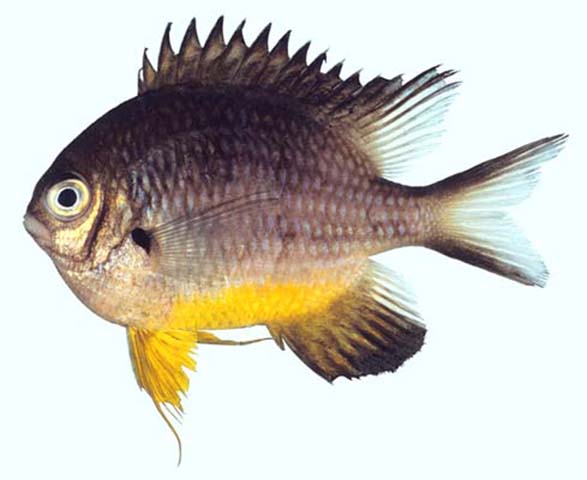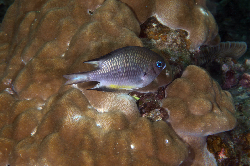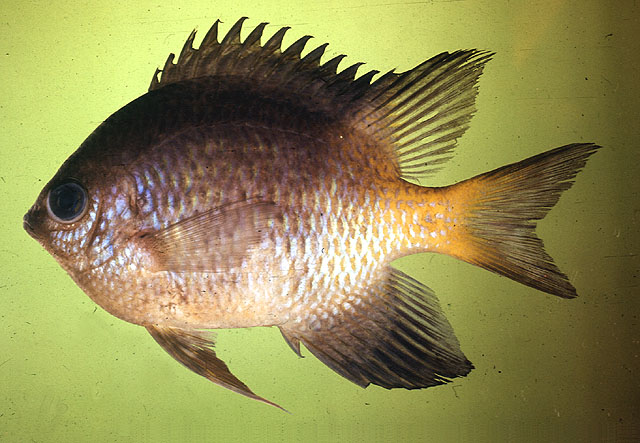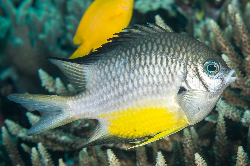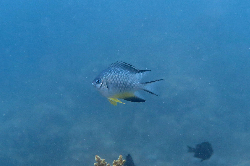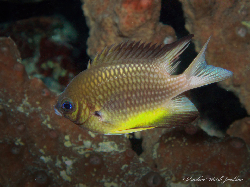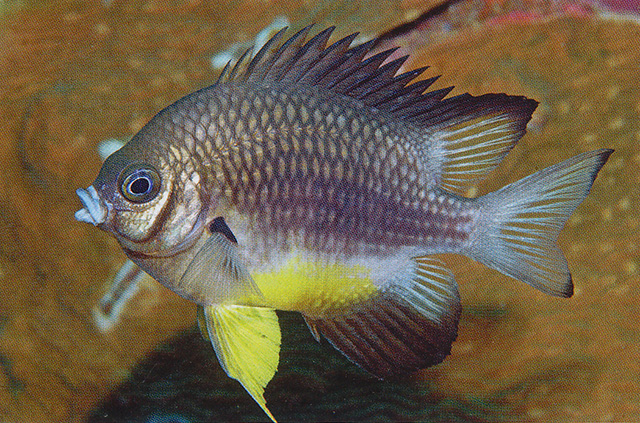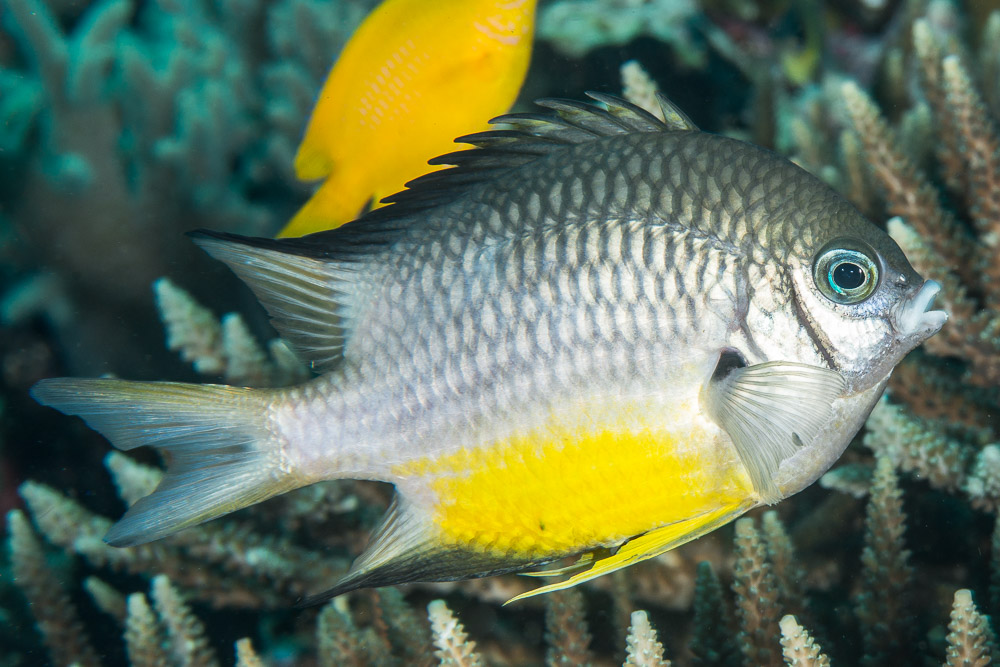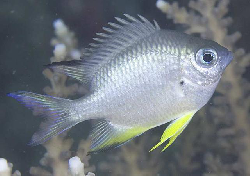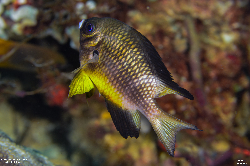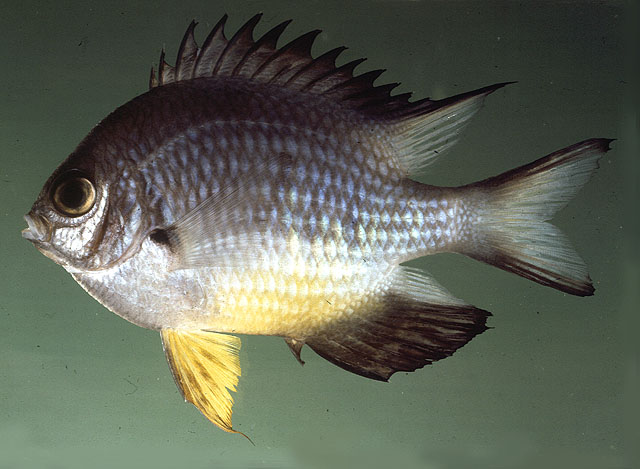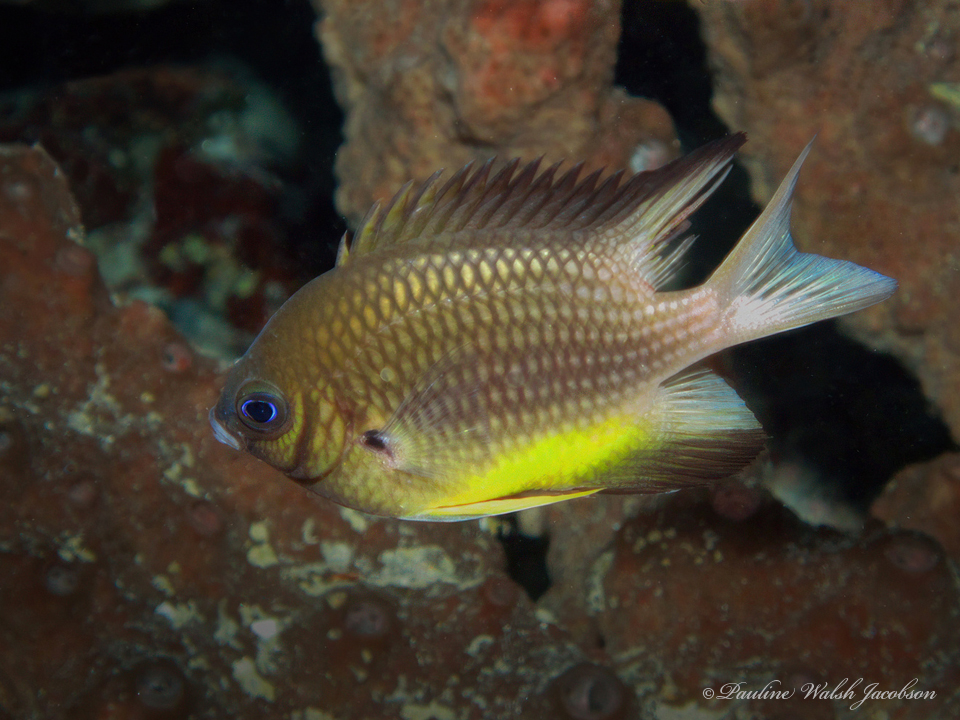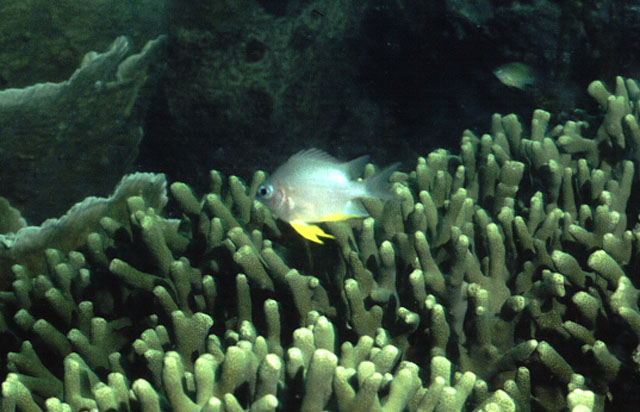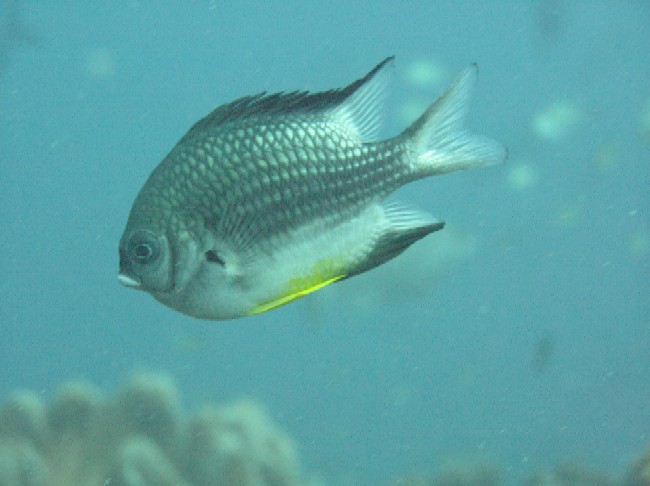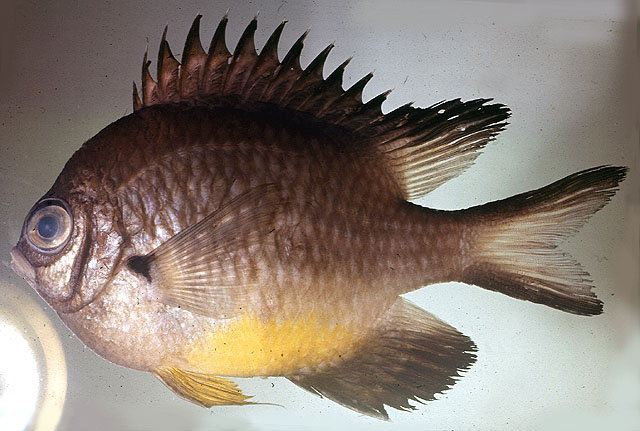Amblyglyphidodon leucogaster (Bleeker, 1847)
Description
Dorsal spines (total): 13; Dorsal soft rays (total): 12 - 13; Anal spines: 2; Anal soft rays: 12 - 14. This species is distinguished by the following characters: D XII-XIII,12-13 (usually XIII,12); A II,12-14 (often II,13); pectoral rays 16-17; lateral line tubed scales 14-17; gill rakers total, 25-29; body depth is 1.5-1.8 in SL; colouration, silvery grey with paler scale centers and yellow belly, the anterior half of anal fin and anterior margin of soft dorsal fin and the upper and lower margins of caudal fin is blackish; upper pectoral fin base with a distinct wedge-shaped black mark (Ref. 82240).
Common Names
No common names available.
Taxonomic Hierarchy
Kingdom: Animalia
Phylum: Chordata
Class: Teleostei
Order: Ovalentaria/misc
Family: Pomacentridae
Genus: Amblyglyphidodon
Species: Amblyglyphidodon leucogaster (Bleeker, 1847)
Climate Zone
Location
Biology
Adults inhabit lagoons, reef passages, and the outer reef slopes as solitary individuals or in small groups. Feed on copepods, amphipods, mysids, fish eggs, crustacean larvae, and a small portion of algae (Ref. 7247). Oviparous, distinct pairing during breeding (Ref. 205). Eggs are demersal and adhere to the substrate (Ref. 205). Males guard and aerate the eggs (Ref. 205).
Habitat
associated
